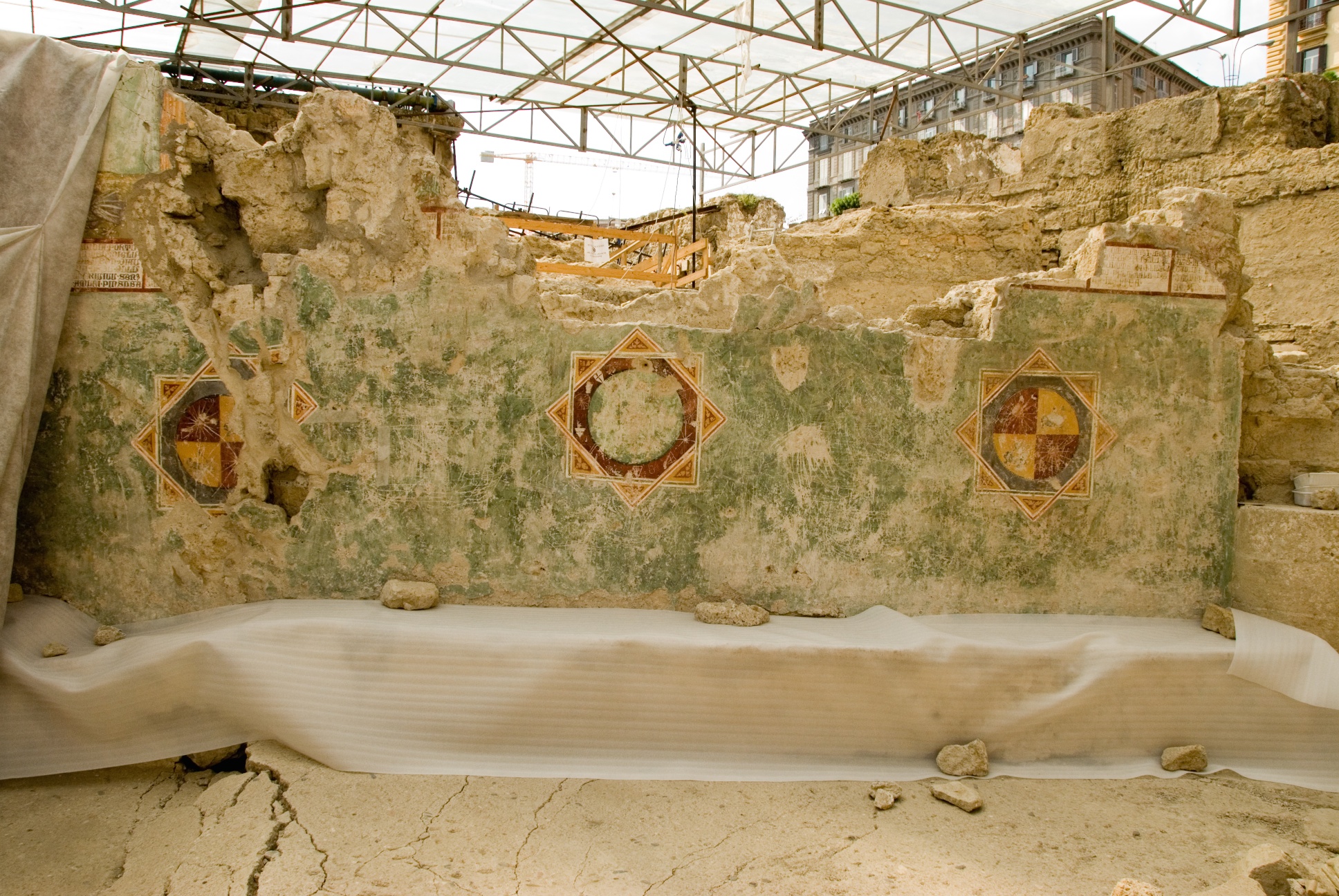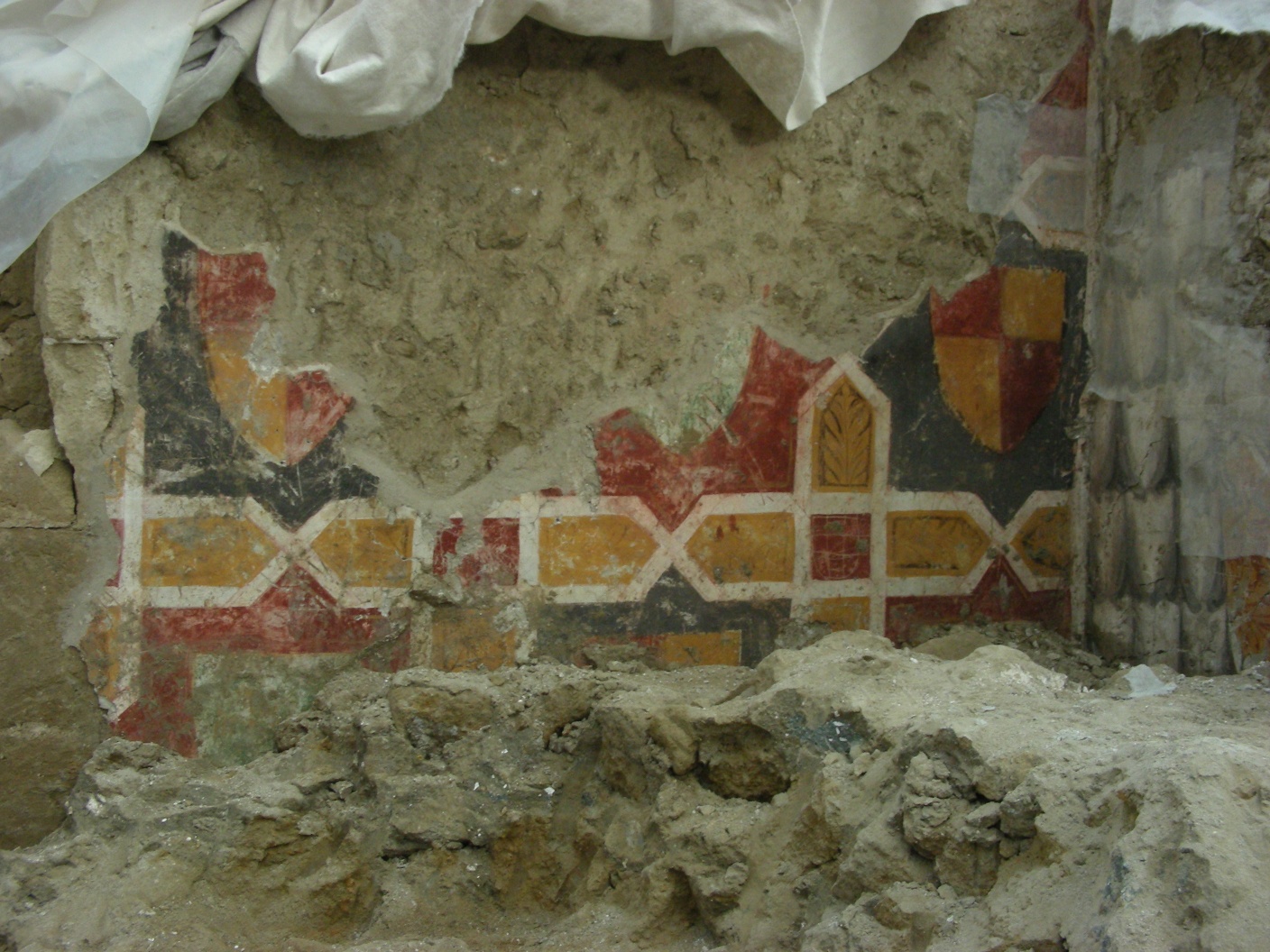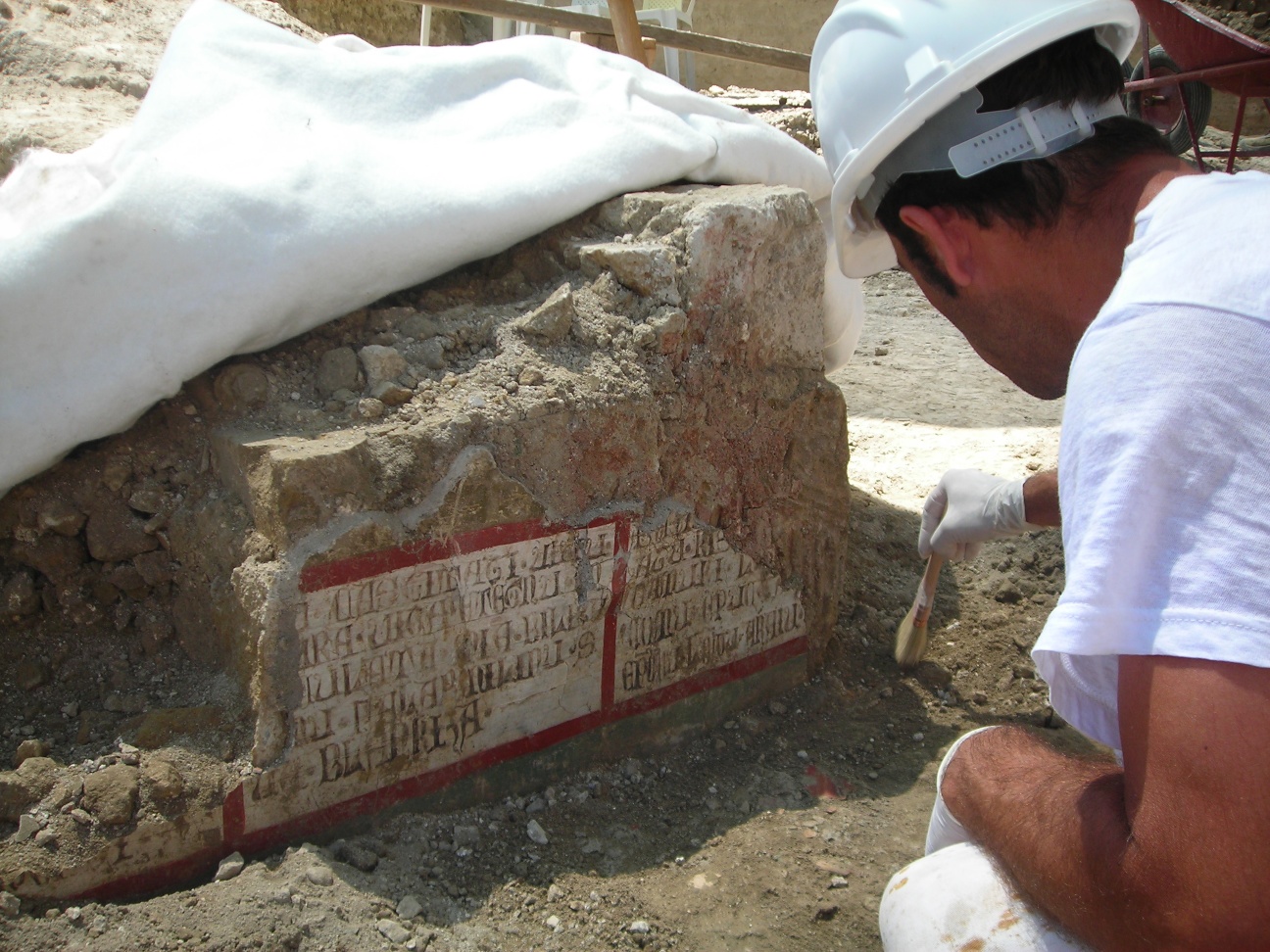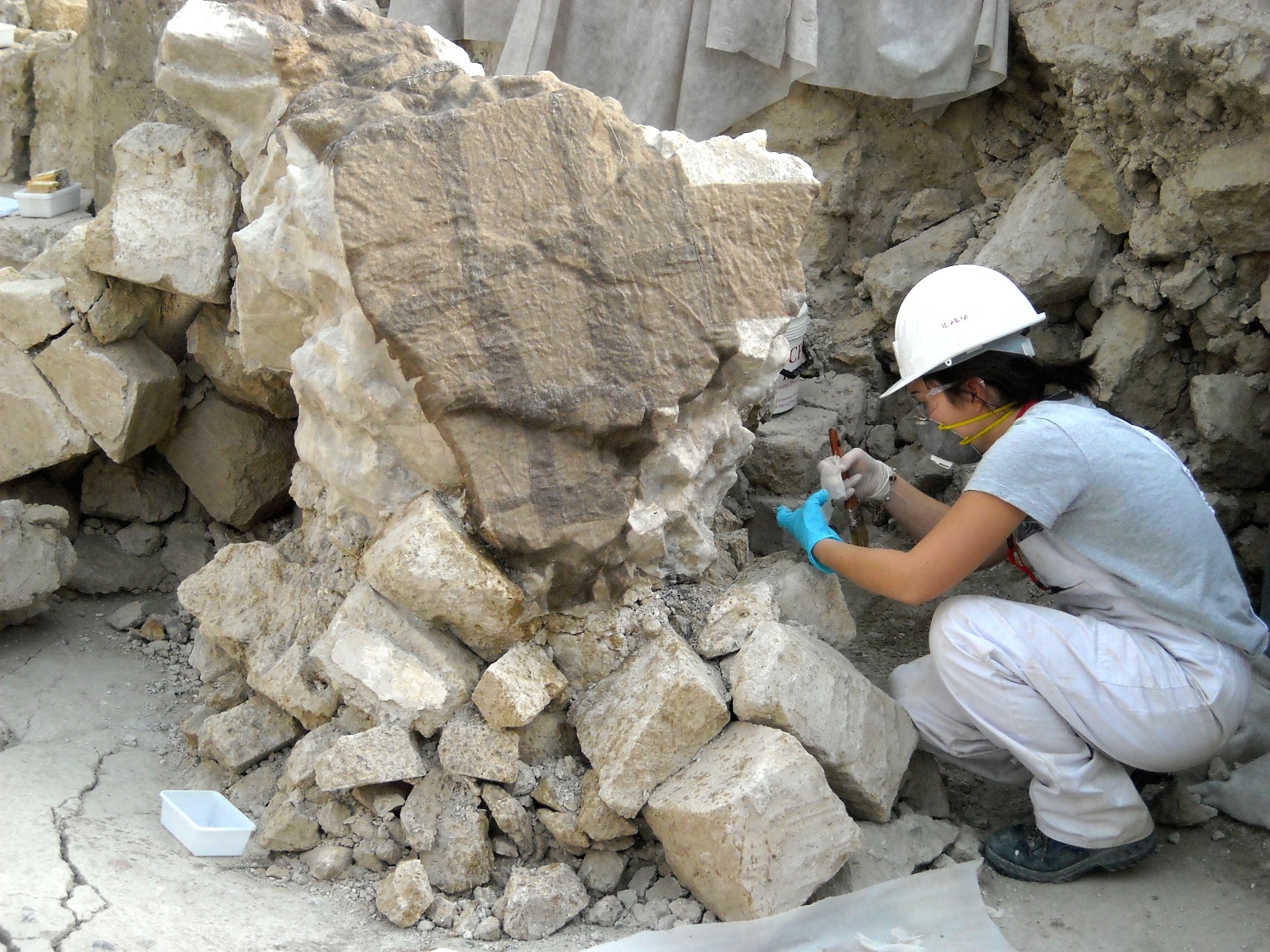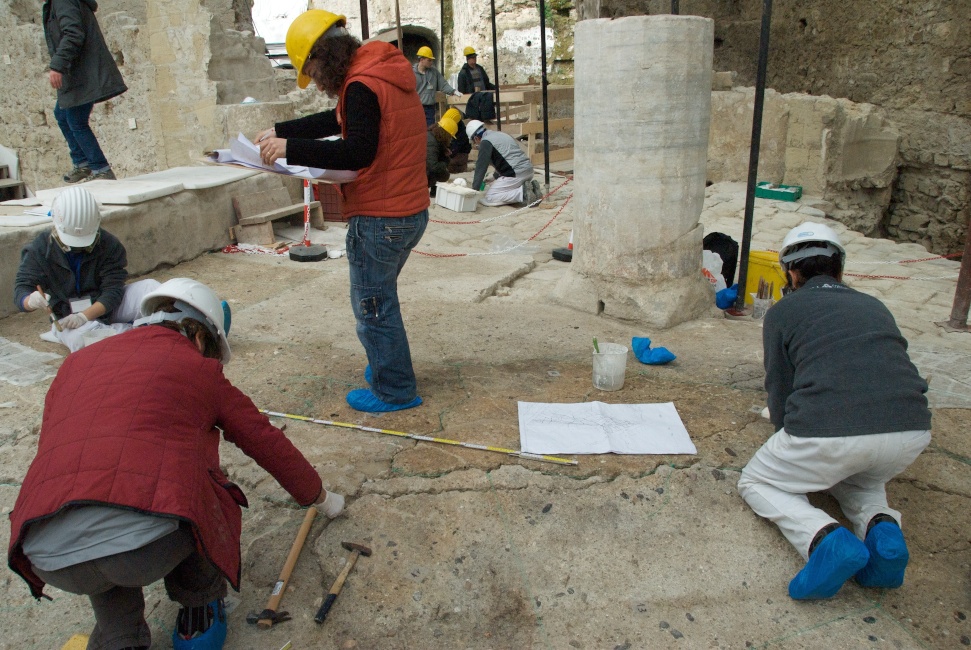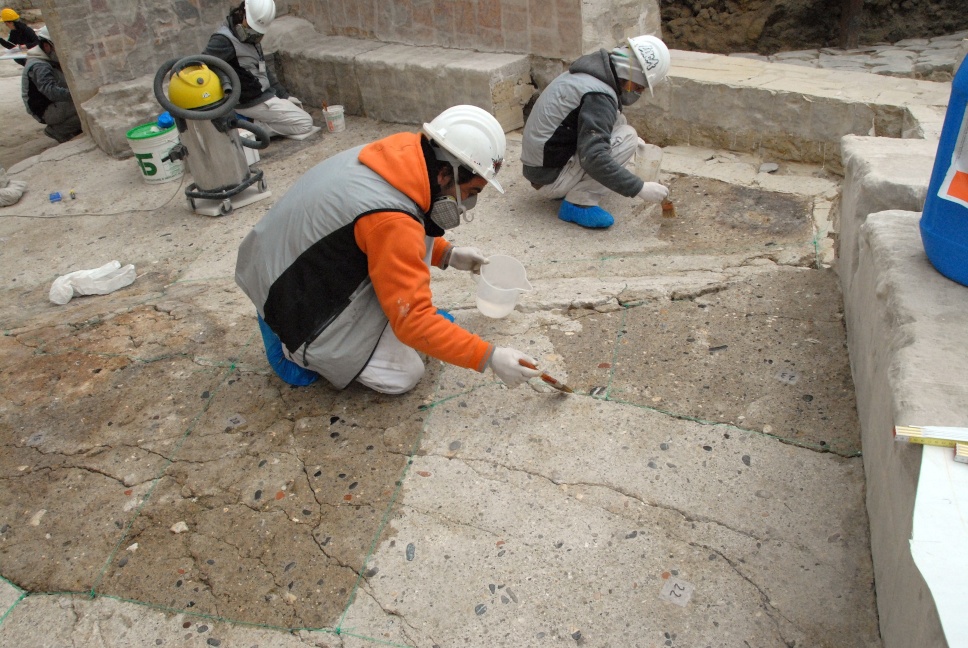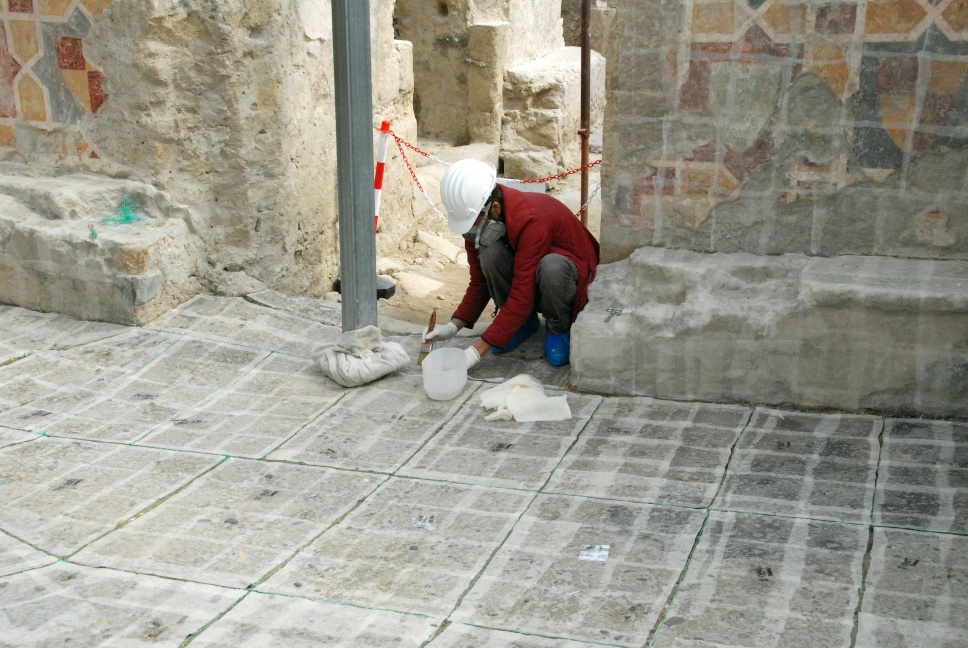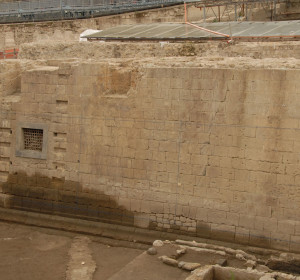Naples, Municipio Station, residence of the Angevin period, Palace of the Balzo
Date
Wednesday June 15th, 2016
DATA SHEET
DATING:
XIV century
LOCATION:
Naples, Municipio Square – Work for the realisation of the Naples Metro – Line 6 _ Municipio Station
CUSTOMER:
SUDMETRO scarl
HIGH SURVEILLANCE:
Archaeological Superintendency of Naples – Daniela Giampaola
Superintendence for the Environmental, Architectural, Landscape, Historical, Artistic and Demo-anthropological Heritages Naples – Arch. Ugo Carughi
Superintendence for the State Museums of Naples – Dr. Annachiara Alabiso
SCIENTIFIC ADVICE:
Arch. Gisella Capponi (I.S.C.R.), Arch. Mariagrazia Filetici (Archaeological Superintendency of Rome)
PERIOD OF THE INTERVENTION:
2008-2009
THE PROBLEM
To allow the construction of Municipio Station – Line 6, it has been necessary to temporarily remove some walls of an Angevin residence found during the archaeological excavation.
Dismantled works were stored in the Metro warehouse and will be reassembled on site, following the dimensions and original orientation, inside the station,
The operations, very complex, have been carried out in a month span between 2008 and 2009.
THE METHOD
The intervention consisted in preparing the detachment of walls, including plaster and wall painting which covered them. The structure is divided into sections and documented by archaeologists and architects before dismantling. It has been implemented the pre-consolidation, temporary protections have been realized and has been guaranteed the continued assistance of the restorers during the cutting of walls and installation of steel structures. After cutting all the sections and the construction of the steel crates necessary to handle and store in a safe, the intervention was completed with the packaging of the wall sections and the transport to the storage area.
In the preparatory phase related to the cutting and the dismantiling of large portions of the wall frescoes, it has been implemented the plaster consolidation, with hydraulic mortars and acrylic resins in emulsion.
For the de-cohesion of the paint film were employed micro acrylic emulsions. The cracks were closed with a lime-based mortar.
The surface protection has been achieved by applying a bandage with cotton gauze canvases in addition to acrylic resin in solution.
Cushioning materials, polyethylene foam sheets of different thicknesses and densities were used for wrapping.
